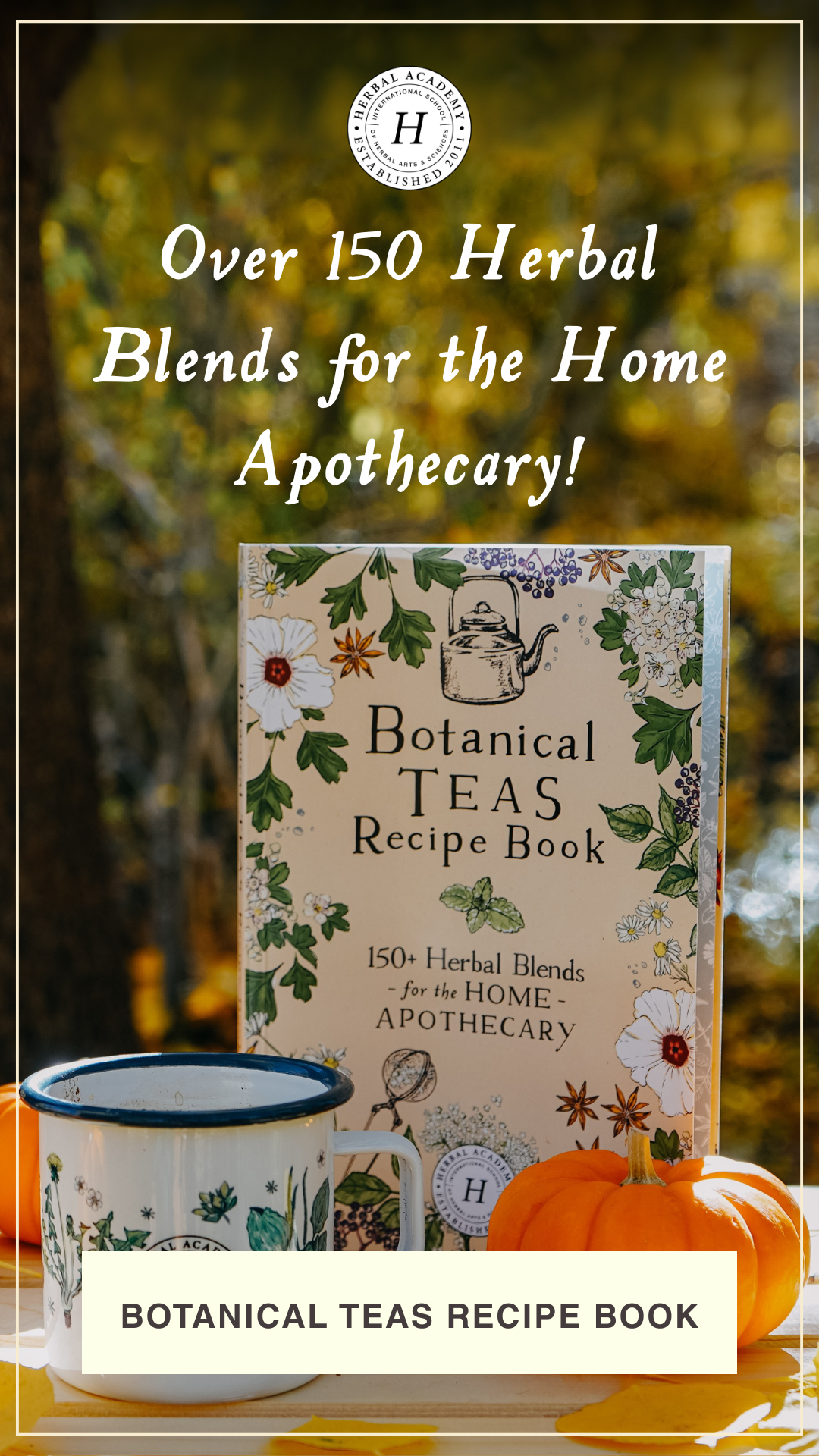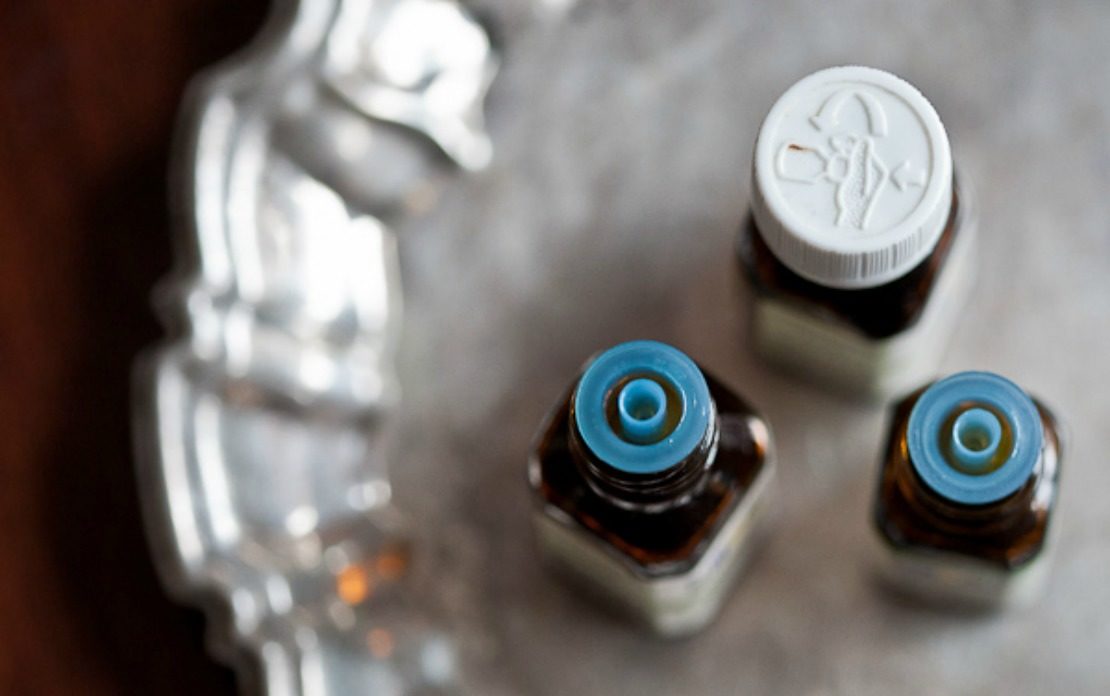
Cold and Flu Essential Oils for Children
The best way to avoid the tell-tale signs of cold and flu is to deter illness from entering your home in the first place. However, unfortunately, no matter how much handwashing, surface disinfecting, citrus essential oil diffusing, and mask wearing we do, our children may still develop some type of upper respiratory infection during the winter months. As parents, we may feel helpless as we watch them struggle to breathe through stuffy noses or listen to them cough at night. Fortunately, there are several cold and flu essential oils for children that parents can utilize along with our favorite herbal teas and compresses to help our little ones feel better during times of discomfort.
When a child is very sick it is tempting to use large doses of essential oils to help the child feel better sooner. However, this approach is counter-productive and can even be harmful. Practicing essential oil safety is especially important around children. Instead of mega-dosing, keep the doses low and increase the frequency of exposure/application, which is better for the child’s health, as well as more effective at addressing the issue at hand. This applies to all methods of essential oil application.
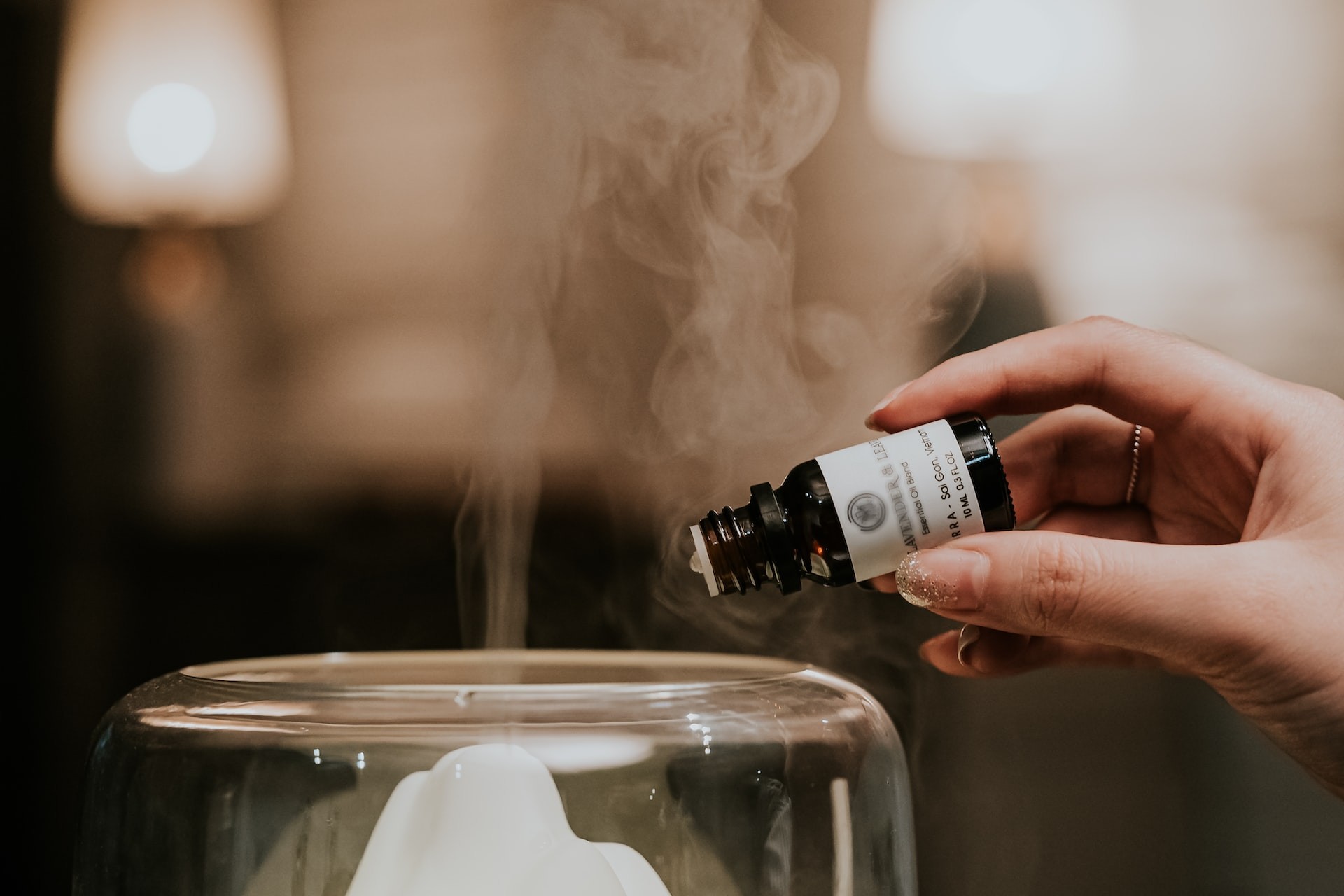
Environmental vs. Wellness Use
We could say that our essential oil use falls into two broad categories: “environmental” use and “wellness” use. Environmental use is when we diffuse essential oils throughout our homes to create a pleasing atmosphere or when we use them as cleaning supply ingredients. The exposure levels we experience from environmental use are relatively small, and even essential oils that need to be used with caution can be used in this way. For example, it is safe to use a “thieves”-style blend, containing cinnamon (Cinnamomum spp.), rosemary (Salva rosmarinus), and clove bud (Syzygium aromaticum) essential oils in your cleaning supplies or to diffuse lightly in a well-ventilated room around your children. As long as the aroma is mild or no longer noticeable, it is considered an “environmental” use.
However, “targeted” use implies larger doses that directly address a particular condition. Cosmetic blends and skincare blends can fall into either category, depending on intent and dosage. Many of the essential oils that are safe when used in a child’s environment can be much more hazardous and carry significantly more risk to a child’s wellbeing when used in a higher dosage or when they come in direct contact with a child’s skin.
Essential Oils to Ease Respiratory Infection Discomforts
Several essential oils that are often indicated for general antimicrobial or antiviral use are not safe to use with young children to address illness or injury. The same can be said for those suggested for use in easing the discomforts that can accompany a respiratory infection. However, there are alternatives which you may already have in your essential oil collection.
Lavender (Lavandula angustifolia), rosalina (Melaleuca ericifolia), spearmint (Mentha spicata), geranium (Pelargonium x asperum), and Virginia cedarwood (Juniperus virginiana) are excellent choices when making blends for children, as they can all help ease occasional stuffiness or cough. They also have calming qualities to help children relax before bedtime. Conifer and other pinene-rich oils, especially black spruce (Picea mariana), are good substitutes for Eucalyptus spp. (see caution notes below), while the citruses—lemon (Citrus limon), sweet orange (Citrus sinensis), and mandarin/tangerine (Citrus reticulata)—are good to diffuse or blend with the other oils above. These essential oils are especially valuable during cold and flu season as they can support general wellbeing when used environmentally throughout the winter months.

Essential Oil Cautions
Essential oils containing menthol and 1,8 cineole (e.g., peppermint (Mentha x piperita), Eucalyptus spp., cardamom (Elettaria cardamomum), and rosemary (Salva rosmarinus)), the very essential oils adults often associate with easing congestion, can elicit a respiratory reflex in children, causing a child’s breathing to slow and possibly even stop (Horváth, G., & Ács, K., 2015). It is important to keep these oils away from the faces of children under 10 years old (Tisserand & Young, 2014). Be sure to read the labels of your favorite respiratory support blends, including over-the-counter remedies, such as Vicks®, as they are likely to have these essential oil ingredients.
If one uses menthol- or cineole-rich essential oils with children, one should follow the Tisserand Institute’s guidelines. Peppermint (Mentha x piperita), or products containing menthol, should not be used at all with children under age three, but for older children, peppermint essential oil can be diffused or applied topically up to 0.5%. Note that this is a higher dilution than what is recommended in a general topical dilution table. Eucalyptus can be a safe and effective choice for helping children ease respiratory symptoms when it is used in small doses and kept away from the children’s faces. One may use Eucalyptus radiata and E. globulus with children ages 3 months – 3 years in a diffuser or topically up to 0.5%, and topically with children 3-6 years old at 1% dilution (Tisserand, n.d.).
Essential Oil Application Techniques for Children with Respiratory Illnesses
Inhalation and Diffusion
When using a topical supportive blend, such as a salve, lotion, or oil formulation containing essential oils, one can avoid many skin health and dilution concerns by placing the preparation on the child’s clothing. It is helpful to place some of the topical blend on the back of an infants’ clothing between the child’s shoulder blades. This way, the children also cannot reach the application spots and possibly get the salve or oil on their fingers.
One advantage of using an indirect inhalation method, such as putting some of the blend on a child’s clothing, is that it can be removed from the child’s vicinity if the child starts to have an adverse reaction. If using a diffuser, simply remove the diffuser, move the child to another area, and air out the room if anyone has any adverse reactions (e.g., breathing discomfort, headache, or nausea).
It is best not to leave a diffuser running in a child’s room all night long. Run the diffuser for 15 minutes before the child goes to bed, then turn it off. If you use an intermittent diffuser, use a small amount of essential oil and use the diffuser on its lightest setting. A couple of drops of an essential oil blend on a tissue tucked into the child’s pillowcase or dropped on clay diffuser beads set in a bowl on a high shelf may also help.
Older children may use essential oils in the shower. Simply pour 2-3 drops of a child-safe respiratory blend, perhaps a blend of conifers and citrus oils, on the floor of the shower close to the faucet, so the child will not step on the oils. The oils will vaporize while the child showers, allowing the child to inhale the steam containing the beneficial vapors.
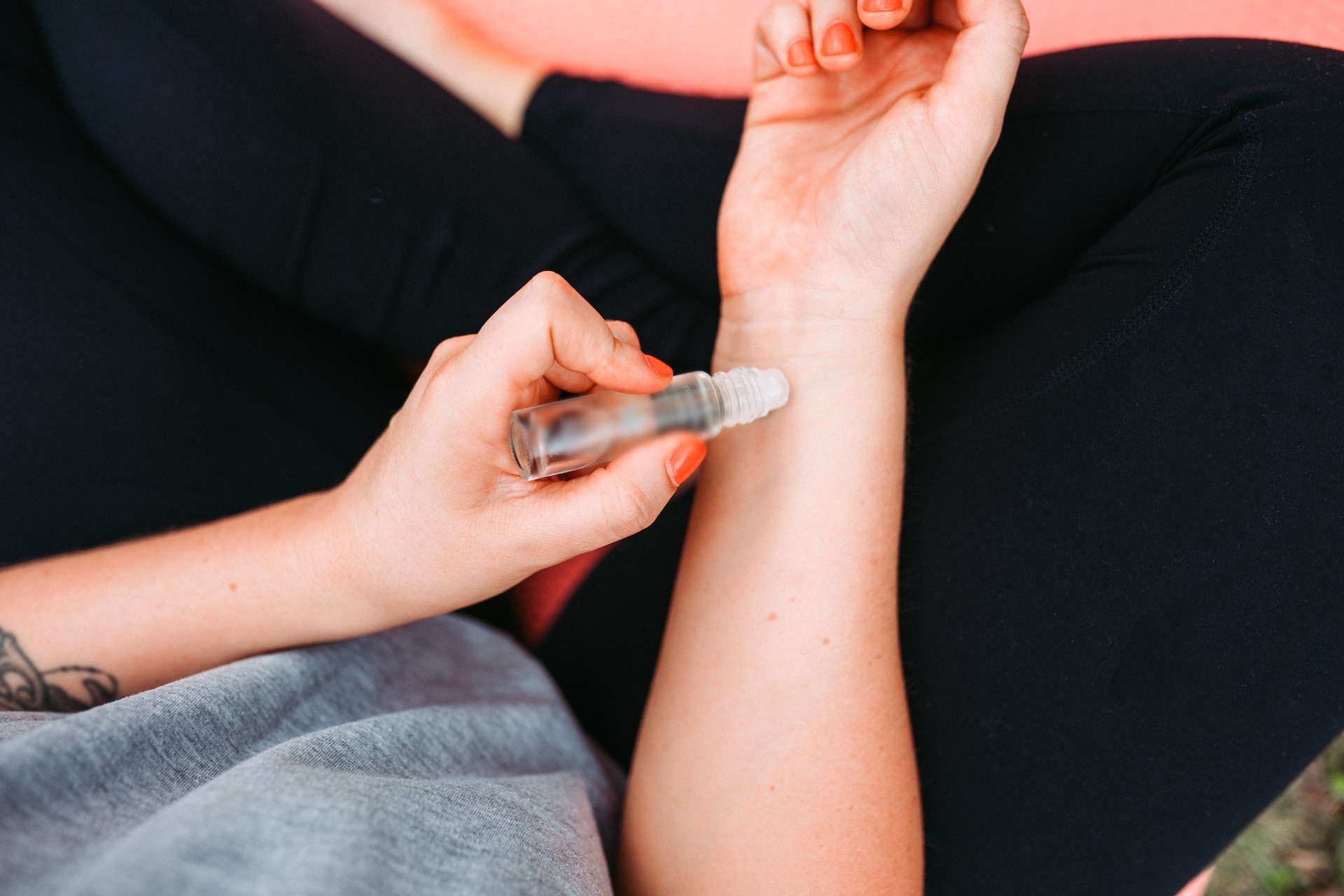
Topical
While it makes sense that the best way to address a respiratory issue is through inhalation, toddlers and older children might also benefit from applying topical preparations directly to the skin. Usually, even these applications are more for purposes of inhalation as the effective avenue of absorption, not actually cutaneous absorption (through the skin). It is important to keep strong-smelling essential oils, such as Eucalyptus spp. and peppermint (Mentha x piperita), away from children’s faces. Application sites to consider are the upper back, chest, and feet (cover with socks). For very young children who might rub their hands in the preparation, possibly then transferring the essential oil to their eyes or mouths, it is a good idea to cover the application site with clothing.
Dilution percentages for topical applications of most essential oils (Tisserand & Young, 2014):
| Age | Recommended % | Maximum % |
| 0-3 months* | 0.1* | 0.2* |
| 3-24 months* | 0.25* | 0.5* |
| 2-6 years | 1 | 2 |
| 6-15 years | 1.5 | 3 |
*There are many concerns—beyond the scope of this article—with applying essential oils directly to infants’ skin. Do this only with great caution. It is often best to consider other options first, such as passive inhalation techniques, steamy showers, honey for coughs, vaporizers, etc.
Another topical approach would be to use essential oils in the child’s bath, for children over 2 years old. Be sure to use an appropriate dispersant and keep the water away from the child’s eyes. (A good resource for bath safety and using dispersants is here https://tisserandinstitute.org/safety/bath-safety/.) One easy way to do this is to stir 5-10 drops of essential oil blend into 1 tablespoon of shower gel or shampoo, then swish the blended gel/shampoo thoroughly into the bathwater. It is best to mix one bathtub’s worth at a time. Use skin-friendly essential oils, such as lavender (Lavandula angustifolia) or Virginia cedarwood (Juniperus virginiana).
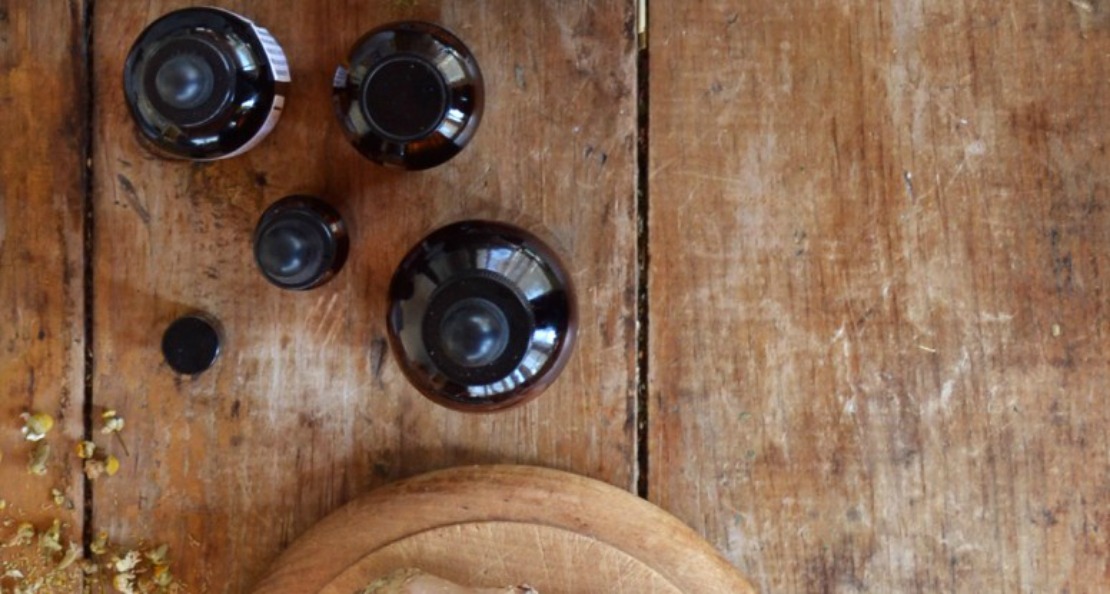
Respiratory Support Blend (ages 2+)
This blend is a basic combination of essential oils, which could then be used in a diffuser, combined with a fixed oil and wax to form a salve, or blended with a carrier oil to form a topical blend.
2 drops rosalina (Melaleuca ericifolia)
1 drops black spruce (Picea mariana)
1 drops lemon (Citrus limon)
[/recipe_directions][/recipe]
Respiratory Support Blend Stock Bottle
This is a stock bottle formulation. Use the stock bottle blend to create bath formulations, salves, oil blends, lotions, or creams.
5ml amber glass bottle with orifice reducer
42 drops rosalina (Melaleuca ericifolia)
21 drops black spruce (Picea mariana)
21 drops lemon (Citrus limon)
To use this blend with children, use the following ratios:
| Age | Drops of Stock Blend | Carrier (salve, lotion, etc.) |
| 0-3 months* | 1-2 drops | 50 mL or 10 tsp |
| 3-24 months* | 1-2 | 25 mL or 5 tsp |
| 2-6 years | 3-6 | 15 mL or 1 Tablespoon |
| 6-15 years | 9-18 | 30 mL or 2 Tablespoons |
*Try other interventions first with children under 2 years old.
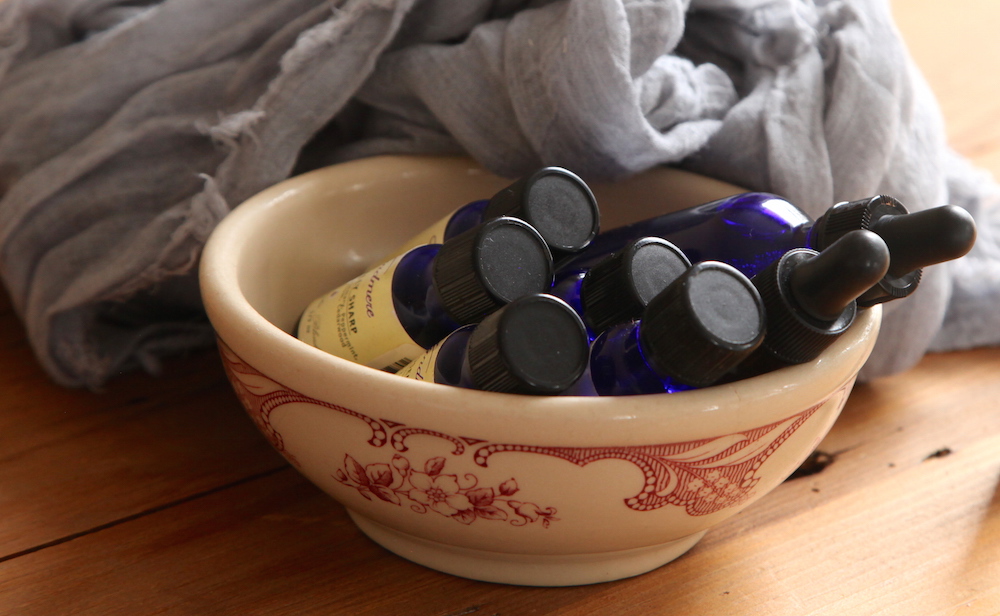
Aromatic Inhaler (Ages 3+ - old enough to inhale when requested)
This is for an aromastick or aromatic inhaler, which a child can use to ease nasal congestion or cough.
1 aromatic inhaler blank
2 drops Virginia cedarwood (Juniperus virginiana)
2 drops black spruce (Picea mariana)
4 drops tea tree (Melaleuca alternifolia)
2 drops lavender (Lavandula angustifolia)
To Use:
Inhale for 5-15 minutes as needed. For a young child under 3 years, waft under the child’s nose when possible. (This combination of essential oils could also be made into a diffuser blend.)
In Closing,
Although the aromas we most closely associate with upper respiratory wellness, Eucalyptus spp. and peppermint (Mentha x piperita), are not the safest essential oils to use with young children under 10 years old, there are still quite a few essential oils that can be very helpful when cold, flu, and other upper respiratory infections visit your home. For older children, as long as you do not apply the Eucalyptus essential oil near their faces, you can include E. radiata or E. globulus in your children’s respiratory support blends. E. radiata is usually recommended more than E. globulus for children.
Several essential oils serve a dual purpose, as they both support healthy respiration and calm the mind, making them particularly useful in helping sick children relax or sleep. Essential oils like black spruce (Picea mariana), Virginia cedarwood (Juniperus virginiana), and lavender (Lavandula angustifolia) can benefit parents and children alike during such a stressful time.
As inhalation is the best way to get helpful plant constituents to the affected nose and lungs, essential oils provide another excellent resource in your herbal toolbox when addressing cold and flu in children.
Other Resources:
- Bath dispersants https://tisserandinstitute.org/safety/bath-safety/
- Bath safety https://theherbalacademy.com/essential-oil-bath-safety/
- https://tisserandinstitute.org/learn-more/bath-safety-2/
- Hydrosols for children https://theherbalacademy.com/how-to-use-hydrolats-for-babies-and-young-children/
- “Thieves” blend for children https://theherbalacademy.com/alternative-thieves-blends/
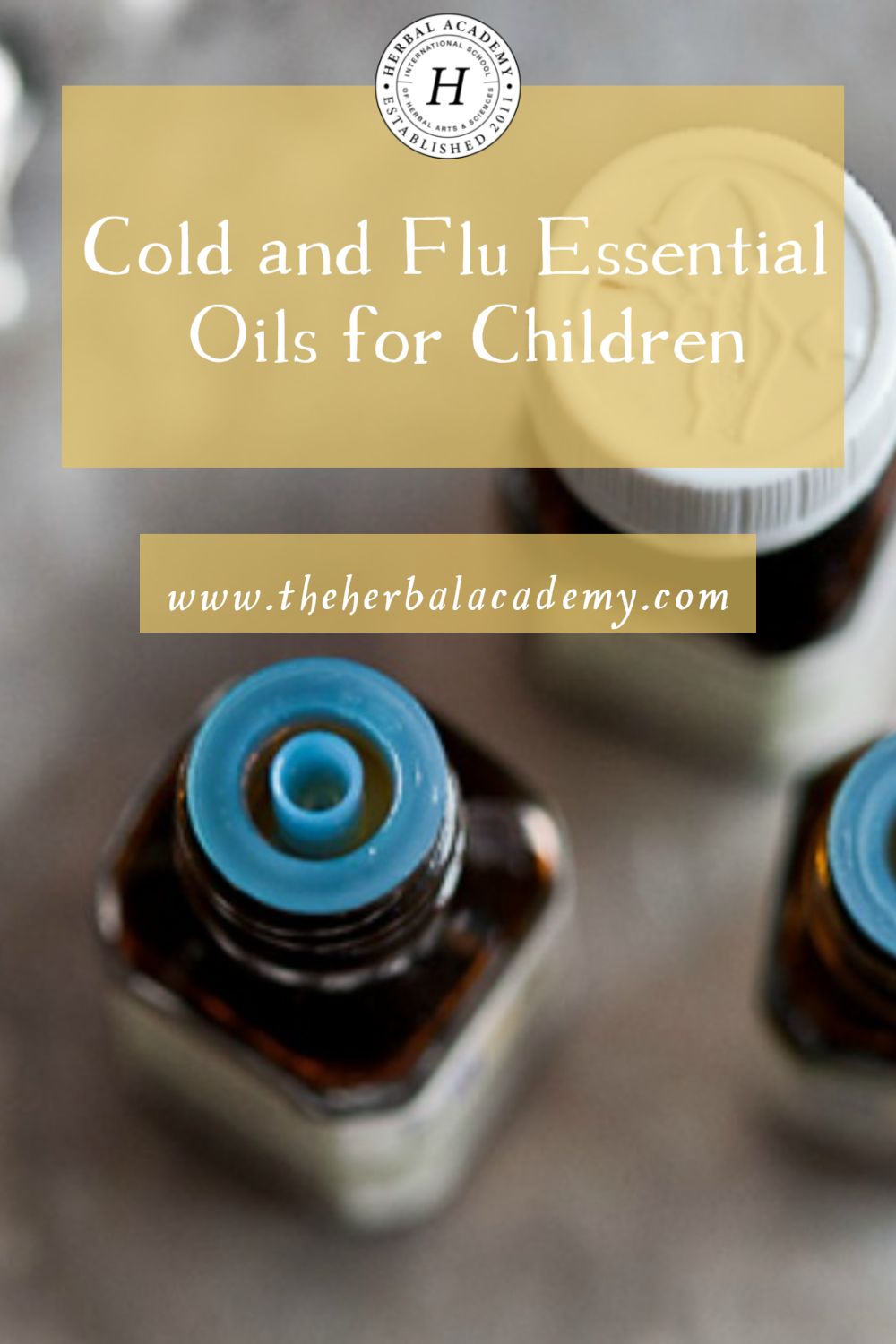
REFERENCES
Horváth, G., & Ács, K. (2015). Essential oils in the treatment of respiratory tract diseases highlighting their role in bacterial infections and their anti-inflammatory action: A review. Flavour and Fragrance Journal, 30(5), 331-341. http://doi.org/10.1002/ffj.3252
Tisserand, H. (n.d.). Are eucalyptus and peppermint oils safe for young children? https://tisserandinstitute.org/learn-more/kids-inhalation-safety/
Tisserand, R., & Young, R. (2014). Essential oil safety (2nd ed.). Churchill Livingstone Elsevier.



